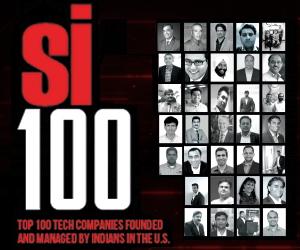Strategies to Turn Experiential Marketing into a Startup Goldmine

- Charge for immersive brand experiences, turning pop-ups and trials into profit-making, community-building events.
- Partner with local festivals to create paid, branded immersive zones that generate virality without ad spend.
- Use geo-targeted activations and personalized follow-ups to convert offline interactions into online buzz and rapid user growth.
Startups don’t have Coca-Cola budgets, but they have something better, the freedom to be weird, raw, and unapologetically human. While big brands rent attention with polished ads, the smartest founders sell the attention itself by charging people to step inside their world. This is the real goldmine in experiential marketing, turning marketing into a direct revenue stream that funds growth, proves demand, and creates a self-accelerating flywheel of UGC, community, and investor FOMO.
The model is simple but ruthless in its effectiveness, create an experience so undeniably magnetic that people pay to enter, photograph it obsessively, and tell everyone they know. The event pays for itself (often making profit on day one), the content explodes online, and the brand loyalty becomes borderline cult-like.
Done right, the experience becomes the product, and the product becomes secondary.
Bharatt Hari, Managing Director & CEO, Good-Bee Integrated Marketing Services, says, “Today's customers are keen to understand a brand's values and how it can benefit them, and they expect brands to consistently uphold these principles. To engage such an audience effectively, a brand's message and experience must remain uniform across all platforms, whether online or offline. It's crucial for the communication to be cohesive, enabling brands to establish a strong and lasting presence in the minds of their customers".
Here are some lesser-known strategies that distinguish startups quietly generating profits from those rapidly burning cash.
Turn Trials into Ticketed Rituals
![]()
Most D2C brands beg for feedback with free samples. Smart ones charge Rs 99 - Rs 299 for a lab ritual where customers co-create, test, and ritualize your product in a pop-up wonderland. This validates formulations, collects UGC, and converts 40%+ of attendees to repeat buyers on-site.
Case Study: Plum partnered with CupShup for a 3-month hyperlocal brand activation across Tier 1 and Tier 2 cities, bringing products directly to tech parks, salons, and malls. Experiential touchpoints product sampling, expert consultations, and Instagram-ready setups generated 2.5M+ reach, 1.2L+ consumer interactions, and Rs 45L+ on-spot sales, with a 40% brand recall lift.
Strategic BTL marketing, combined with digital amplification via QR codes and social sharing, turned traditional product launches into measurable ROI-driven, immersive experiences, demonstrating the power of hyperlocal experiential marketing for D2C skincare brands.
Festivals as Your Freeway to Fandom
![]()
Big brands sponsor events, startups become the event. Partner with local festivals not for logos, but to co-create paid temples of your brand immersive zones where attendees pay to escape into sensory worlds tied to your ethos. This leverages India's 50K+ annual fests for zero-ad-spend virality.
Case Study: boAt was founded in 2016, and its audio accessories played a disruptive role in the Indian market, with its stylish and affordable products being youth-oriented. The brand has grown quickly by using the power of influencer marketing on Instagram and YouTube, planned partnerships with music festivals, IPL, and celebrities, and good omnichannel coverage on Amazon, Flipkart, and its own platforms.
Through millennial-centric branding and extensive online and offline presence, boAt has become the leading wearable brand in India, demonstrating how D2C companies can grow and attain market dominance in competitive niches in a remarkably short period of time.
Build ‘Pop-Up Portals’ as Core IP
![]()
Don't treat pop-ups as one-offs, design them as licensable portals to alternate realities, starting small and franchising to malls/hotels. Tier pricing (Rs 499 GA, Rs 1,999 VIP with exclusives) creates FOMO, while data from scans/waitlists feeds personalized follow-ups.
Case Study: Pernia Qureshi’s 2012 luxury multi-designer e-com evolved into an experiential powerhouse with the 2024-2025 'Portal Series' pop-ups in Bandra and Khan Market. Mirrored labyrinths, AI stylists, wardrobe time machines, and VIP ateliers offered immersive experiences, limited to 200 spots at Rs 799+.
Events sold out quickly, generating Rs 20 Crore in sales and 500K+ social impressions. WebEngage integration boosted deanonymization 5×, email revenue 25%, and MAUs 40%. Pernia’s now licenses portal formats to resorts, turning one-off events into recurring IP revenue streams.
Also Read: How Gen Z Is Setting the Agenda for the Future of Consumer Tech
Zepto’s Experiential Marketing That Made 10 Minutes Legendary Now
![]()
Zepto disrupted quick commerce post-lockdown with a 10-minute grocery delivery promise, but scaling across 20+ cities and 400+ dark stores required smart experiential marketing. Through hyperlocal BTL activations geo-mapped campaigns, guerrilla tactics, pop-up booths, influencer drops, and QR-enabled engagement Zepto turned offline interactions into viral online journeys.
With automated CRM triggers, UGC amplification, and gamified loyalty, the campaign drove 46+ lakh app downloads, 28+ lakh new users, 3+ crore offline interactions, and pan-India social buzz, proving experiential marketing can deliver massive adoption and lasting brand love.
Wrapping It Up!
India's not just scaling unicorns, it's birthing wonder-weavers. In 2025, the $50 Billion experiential sector (FICCI) will crown those who sell not stuff, but stories etched in memory.
Dare to charge for the dream. Your startup's next round depends on it.

